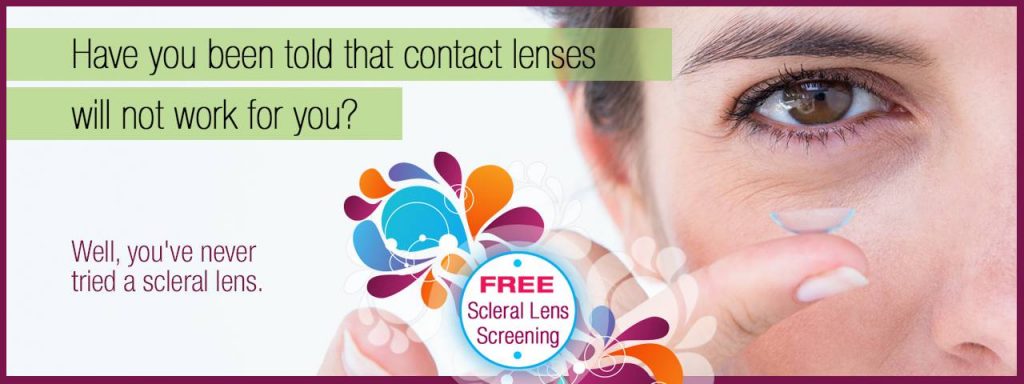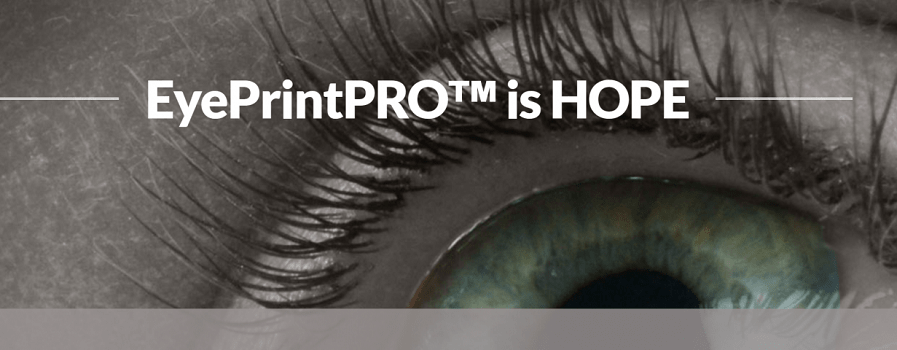How Scleral Lenses Can Help You Wear Contact Lenses

Many Chicago patients have been told that contact lenses cannot be fit to their eye because of an irregular astigmatism or that the cornea is distorted, you may want to make an appointment at Davis Eyecare with our Chicago Eye Doctors and ask about scleral contact lenses.
What are Scleral contacts?
Many Chicago patients have been told that contact lenses cannot be fit to their eye because of an irregular astigmatism or that the cornea is distorted, you may want to make an appointment at Davis Eyecare with our Chicago Eye Doctors and ask about scleral contact lenses.
Scleral contacts are large-diameter gas permeable contact lenses designed to vault over the entire corneal surface and rest on the white of the eye (sclera). The fitting che back surface of a scleral lens acting as a fluid reservoir to provide comfort for people with severe dry eye who normally could not tolerate contact lens.
In addition to keratoconus, scleral contact lenses can be used for eyes that have undergone a corneal surgery, and for people with severe dry eyes caused by systemic conditions.
Advances in lens design technology are allowing manufacturers to design scleral lenses that can correct more conditions than ever before, including bifocal sclerals for the correction of presbyopia.
What are the benefits and advantages of Scleral lenses?
- Better Comfort. Since scleral lenses rest on the white part of the eye (sclera and conjunctiva) they are usually more comfortable than lenses than lenses that rest on the cornea.
- Clear vision for people that have become intolerant to soft lenses. These lenses don’t dry out as the progresses, a common complaint of people who wear soft lenses, especially if they work on computer for many hours.
- Individuals with a dry or a very wet eye benefit from scleral lenses because they have a reservoir of fluid behind the lens. This then protects the cornea, and may even allow it to heal in cases where the cornea was damaged. These lenses extend under the upper and lower lids are rarely dislocate. They are approximately the same size as most soft contact lenses.
- People who have had LASIK or other refractive surgeries that have been less-than successful or they now find it difficult to read without wearing reading glasses.
- Keratoconus and Pellucid Marginal Degeneration: these are diseases of the cornea where there is cornea distortion. The scleral lenses create a new, clear, optical surface and enable people to regain clear vision.
- Problems after a Corneal graft or corneal transplant: when someone has had a corneal transplant, there is often a considerable amount of astigmatism and distortion. The Scleral lens enables individual to see once again.
Who could benefit from scleral lenses?
- Patients with irregular corneas.
- Patients with conditions that affect the tear film.
- Patients with refractive conditions (nearsightedness, farsightedness, or astigmatism) who are unable to wear other forms of correction could benefit from scleral lenses.
- Conditions such as keratoconus and pellucid marginal corneal degeneration cause irregularity in the surface of the eye.
- Surgery (keratoplasty, refractive surgery) can also lead to corneal irregularity.
Finally, there is something new that brings hope for patients with corneal irregularities that have tried everything, or have corneal pathology advanced enough that standard advanced fitting techniques offer only marginal success. The EyePrintPRO™ purpose is to provide the best quality of life, through vision, for patients who are extremely visually impaired and currently without alternative solutions to their corneal disease and irregularities.
The EyePrintPRO™ is indicated for keratoconus, irregular astigmatism, ocular surface disease (dry eye), trauma, extreme cases of deformed eyes, pellucid marginal degeneration, chemical burns, post surgical corneas (including corneal transplants and post LASIK ectasia), pinguecula, pterygium, stem cell failure, or simply those who desire better vision and comfort.
Read more on the EyePrintPRO™ below…

Irregular Corneas & Scleral Lenses

How to Insert & Care for Scleral Lenses

How is EyePrintPRO Different from Scleral Lenses?
The EyePrintPRO is similar to a scleral lens. It is made of the same FDA approved oxygen permeable materials and the fit vaults the cornea while landing on the sclera. There is a long history of the comfort, health and visual benefits of scleral lenses. The difference, however, is in the design process. General scleral lenses are fit through a system of trial and error with prefabricated lenses. The Precision Vision Rehabilitation (PVR) PROSE Treatment goes a step further to customize the material and precise measurement for proper scleral lens design. The EyePrintPRO is made from an impression of the ocular surface, using the same concept as a dental impression/molding. Instead of using a series of standardized curvatures as with general scleral lenses, or even customized PVR PROSE Lenses, the EyePrintPRO is generated to exactly match the unique irregularities of the individual eye. Because of the precise nature of the back surface fit, high quality and individualized optics can be placed on the front surface of the device, creating exactly what you need.
The Chicago Optometrists at Davis EyeCare is specifically designed, equipped, and staffed to provide patients with nothing but the finest in Specialty Eye Care. As contact lens specialists, we have successfully treated patients with Keratoconus, RK, PRK, and LASIK complications, cornea ectasia, Pellucid Marginal Degeneration, Stevens-Johnson Syndrome, graft host disease and other irregular corneas. Davis EyeCare utilizes and exhausts all options to provide the best outcome for each patient, serving Oak Lawn and Palos Heights. Advanced Contact Lens Designs for distorted Corneas.
Six designs for maximizing vision, comfort and eye health:
- HydraKone, KeraSoft, FlexLens or Soft KC Toric Lenses – Finally, soft lenses for Keratoconus patients! These lenses can provide improved comfort versus other designs. The vision with these specialty soft contact lenses designed for Keratoconus is better than traditional soft lenses and in many cases can provide vision comparable to RGP lenses. These lenses are ideal for those with mild to moderate Keratoconus.
- Custom Piggy Back Contact Lens System – Although this involves wearing two lenses on one eye, most patients find that this can be one of the most comfortable fits for Keratoconus when an RGP alone cannot be tolerated. Most patients learn to insert these lenses quicker than it takes them to brush their teeth. The key with this system is that the soft lens actually protects the sensitive cornea. The soft lens can be customized to hold the RGP lens, which keeps the RGP lens in place and reduces the chance of losing the RGP lens.
- Synergeyes – These lenses are the latest breakthrough in contact lens technology. The center of the lens is a highly oxygen permeable rigid material, while the outer skirt is a soft lens. You get the benefit and comfort of a Piggy Back System while only needing to insert a single lens. Dr. Davis works closely with SynergEyes improving the technology with multifocal improvements and comfort.
- Rose K2 IC – Rose K lenses have been one of the longest and most widely used Keratoconus RGP lenses. The K2 version has a larger diameter which improves comfort. Also, it has a special design that helps address irregular corneas with better quality of vision compared to the original Rose K design.
- Intra-Limbal Dyna-Z – Individually designed lenses based on topography readings. The visual results and comfort can be phenomenal due to larger diameter. Before making the jump to Scleral lenses, this is the lens to try.
- Scleral Lenses – These are RGP lenses that rest out on the white portion of the eye. Amazingly these lenses are extremely comfortable because they do not rest on the cornea. It takes some time to learn to insert these lenses due to the large diameter, but once you get that down you will be amazed by the vision.
